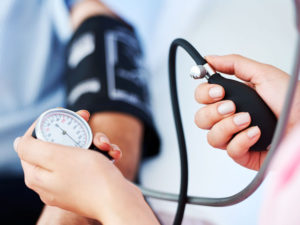The History of High Blood Pressure
[AdSense-A]
When your doctor tells you your blood pressure, he gives you two numbers. Let’s say he tells you that your blood pressure is excellent and is 120/80. What do these numbers mean? Well the 120 is in millimeters, the pressure developed when your heart contracts. It is called the systolic pressure. So what is the “80?” Your blood vessels are not like steel pipes, they are more like rubber tubing. When the blood at 120 mm meets your blood vessels, they balloon up (if they are healthy), and the pressure drops to 80. The 80 is called the diastolic pressure.
Back in the Cretaceous period, when I was in training, the only number we were concerned about was the diastolic. The general belief, at that time, was that if your blood vessels were lined with atherosclerotic plaque (bad) then there would be no flexibility and your systolic would rise to high levels. The high systolic pressure was felt to just record the vascular disease. At that time we were just to treat hypertension if the diastolic was 90 or greater and we should not treat a high systolic.
Then, over the years, we gradually realized that both numbers were bad, and the recommendations are now to treat both high diastolic and high systolic blood pressures. So, what is normal? In general, it is felt that blood pressure between 90/60 and 120/80 are normal for young, healthy people. We allow a slight increase as people get older. For those 50 to 54 years of age, 130/85 is okay, if 60 years or older we accept 135/87. So when do we start treating? We are concerned when BP is greater or equal to 140/90. Now, not all scientists and physicians agree with these numbers, but we feel that they are probably in the right ball park.
So how do we treat? First we tell these people that salt is poison. Years ago, we discovered that about 10% of the population gets high blood pressure from salt. So, the FDA took salt out of baby food. The mothers did not like the taste of unsalted baby food, but the babies did not seem to complain, and hopefully, when they became adults they had not developed a taste for salt. So the first thing I tell somebody with high blood pressure is stop salt. I check the blood pressure one month later, and if it’s normal, I just tell them to continue to avoid salt. If they still have high blood pressure, I give them a diuretic. Now, diuretic means that I give them a drug that makes them pee. Actually, these diuretics work by removing salt from the body. With the drop of salt in the circulation, you must loose water, and if you lose water, the blood pressure must come down.
If this does not drop the blood pressure to normal, we add other pills. The additional medications have other mechanisms of action, such as decreasing the force of the heart’s contraction, or dilating the arteries so that resistance to blood flow drops.
The science here is not perfect, and I am sure that in the coming years we will change what is considered normal.
I hope you enjoyed my little essay, and I will write others in the future. I am open to questions, and would be happy to answer to the best of my ability. My specialty is Internal Medicine and Cardiology.
[si-contact-form form=’2′]


